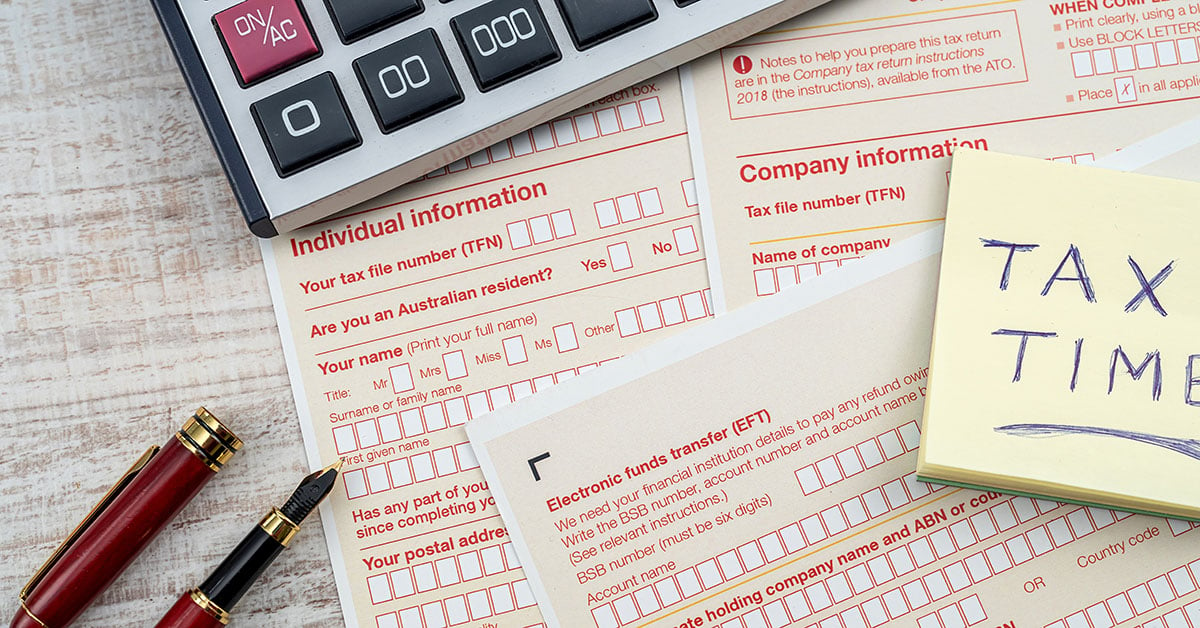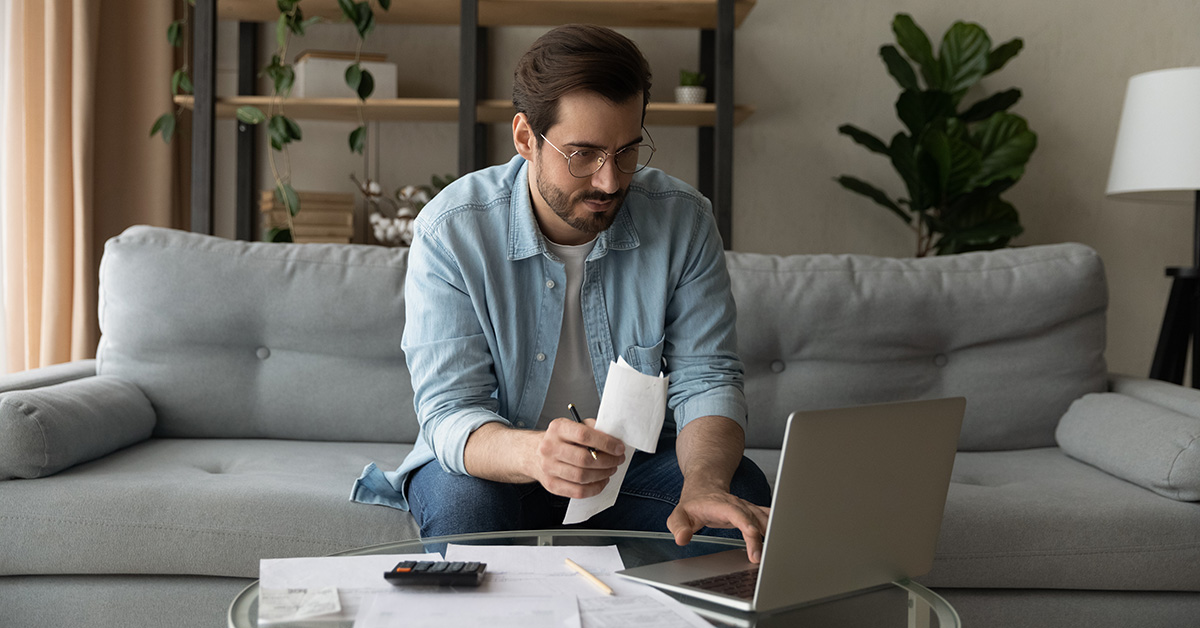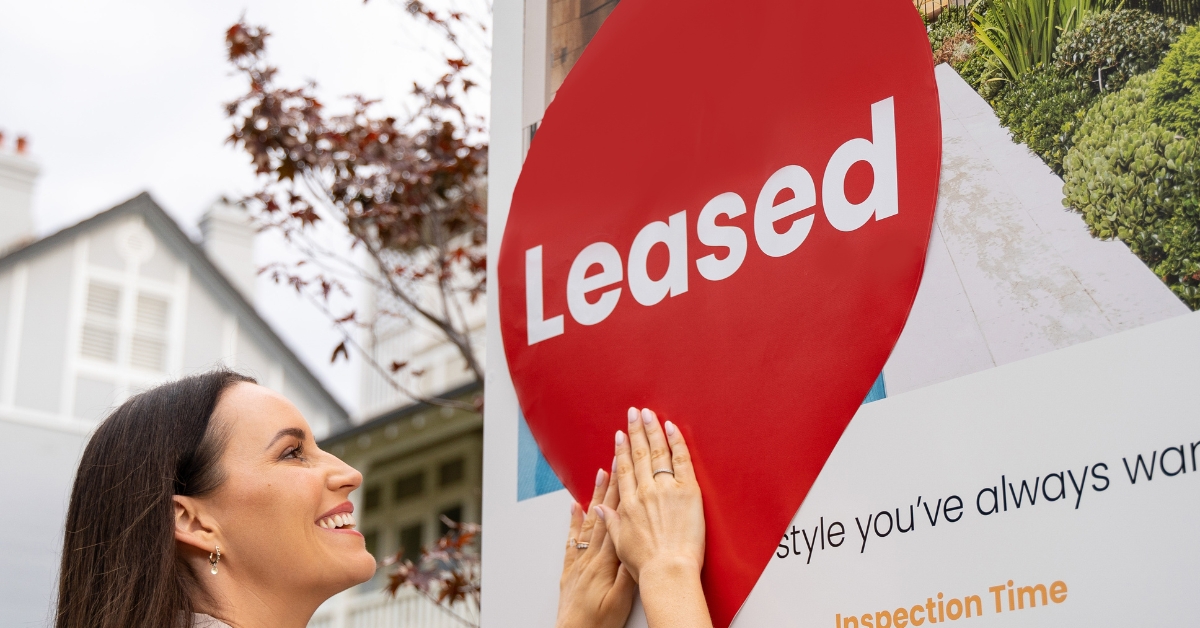A Guide to Investment Property Tax Deductions
Katrina Creer
| 6 mins

Buying a rental property is an exciting investment, but to make the most of it, you also need to understand how to maximise the tax benefits.
And while terms such as 'negative gearing' and 'capital gains exemption' may seem complicated, it is important to take the time to do the research and see how this can be applied to your property. You may just discover some deductibles you have overlooked.
To make it easier, we’ve compiled this guide about investment property tax deductions. With the help of your trusted accountant, it could help you to save thousands of dollars on your taxable income. This is money you could use to help build your property portfolio.
Landlords can offset any losses on their rental property against their assessable income. If the income generated by a property is less than the expense of owning it, then these costs can be deducted from the owner’s income. Effectively, this means paying less tax.
You might be surprised by some of the things landlords can claim. This includes advertising costs to find a tenant, land tax, council rates, strata fees, pest control, repairs and maintenance, garden maintenance, insurance, agent fees, stationery, phone calls and legal expenses.
You can even claim the interest paid on your mortgage, but we will talk more about that later.
It may also be possible to deduct a proportion of your home computer, internet and mobile phone expenditure if you use these devices for managing your rental property.
And while buying a holiday house in Far North Queensland may sound like the perfect excuse for a trip away, travel to inspect an investment property can no longer be claimed on your tax return. Nor can you make claim deductions for time spent at the property for personal use. Expenses can only be claimed for the period during which a property was leased.
Property investors claim around $40 billion in deductions every year, so it is little wonder why returns are often closely scrutinised.
According to the ATO, accurate records ensure that investors pay the right amount of tax. And while few people enjoy paperwork it is an essential part of making sure you are taking full advantage of the available benefits.
It will also make it easier when it comes to selling, as capital gains tax may apply.
The average claim for loan interest received by the ATO is around $10,000. Properties are only eligible if they have been rented or are available to be leased in that financial year.
Interest can’t be claimed if any proportion of the loan was used for personal reasons, such as buying a new car or going on a holiday. It must strictly be only used for the investment property. It is advisable to keep accounts separate, so there can be no confusion come tax time.
It is not uncommon for investors to use an interest-only loan to maximise their deductions.
Known as 'depreciating assets', it includes carpets, curtains, kitchen appliances, air-conditioning and hot water systems. Typically these are separately identifiable items, not part of the structure, not likely to be permanent and expected to be replaced within a relatively short period.
Changes introduced back in 2017 mean that depreciation on such assets can only be made if it was purchased brand new, or if it is in a newly built or substantially renovated property.
Claim depreciation cannot be made on second-hand items. So, if you move into the property for a period before renting it out, you won’t be able to claim items as they will be seen as previously used.
The Australian Taxation Office has determined what is known as the 'effective life' of such items and how much can be claimed. For example, carpets are considered to have a lifespan of 10 years. Property investors can also come up with reasonable estimates but must show records of how this was worked out.
If an asset costs less than $300 – such as a kettle or toaster – and is not part of a set of assets but was used to help to lease the property, it may be eligible for an immediate deduction.
It can be tricky working out exactly what to claim and ensuring you aren’t missing out on benefits. A professional quantity surveyor can take away the guesswork by providing a tax depreciation schedule for your investment property. And their fee is also a deduction.
This includes building a fence, adding a pergola, laying a new driveway or building a retaining wall.
According to the ATO, the rate of deductions for these capital works is generally 2.5 to 4 per cent, spread over a period of 40 or 25 years respectively.
Investors can only claim the cost for rental properties built after 1985 and for those genuinely available for rent. Associated costs such as architect fees, surveying fees, foundation excavation expenses and costs of building permits are also included in construction expenditure.
Seek advice from a qualified accountant who can advise you on how to maximise the tax benefits available. Keep detailed records and always ensure that you are only submitting a return for periods when the home was leased.
Remember not all deductibles can be paid immediately within the same financial year. If you are leasing the property to a friend or family member for less than the market rate, you can only claim the rental income received. And if the investment property is jointly owned, the expenses will need to be divided accordingly to the legal ownership of the property.
Take the time to set up your rental property properly and make your investment work for you.
DISCLAIMER - The information provided is for guidance and informational purposes only and does not replace independent business, legal and financial advice which we strongly recommend. Whilst the information is considered true and correct at the date of publication, changes in circumstances after the time of publication may impact the accuracy of the information provided. LJ Hooker will not accept responsibility or liability for any reliance on the blog information, including but not limited to, the accuracy, currency or completeness of any information or links.
And while terms such as 'negative gearing' and 'capital gains exemption' may seem complicated, it is important to take the time to do the research and see how this can be applied to your property. You may just discover some deductibles you have overlooked.
To make it easier, we’ve compiled this guide about investment property tax deductions. With the help of your trusted accountant, it could help you to save thousands of dollars on your taxable income. This is money you could use to help build your property portfolio.
What are the tax advantages of an investment property?
More than 1.8 million Australians own a rental property, which is seen as a step toward financial freedom. One of the attractions is the huge tax benefits.Landlords can offset any losses on their rental property against their assessable income. If the income generated by a property is less than the expense of owning it, then these costs can be deducted from the owner’s income. Effectively, this means paying less tax.
What other kinds of expenses are claimable?
The good news is that most expenses associated with owning an investment property are tax deductions. This is important as it allows the property to be negatively geared.You might be surprised by some of the things landlords can claim. This includes advertising costs to find a tenant, land tax, council rates, strata fees, pest control, repairs and maintenance, garden maintenance, insurance, agent fees, stationery, phone calls and legal expenses.
You can even claim the interest paid on your mortgage, but we will talk more about that later.
It may also be possible to deduct a proportion of your home computer, internet and mobile phone expenditure if you use these devices for managing your rental property.
And while buying a holiday house in Far North Queensland may sound like the perfect excuse for a trip away, travel to inspect an investment property can no longer be claimed on your tax return. Nor can you make claim deductions for time spent at the property for personal use. Expenses can only be claimed for the period during which a property was leased.
Why staying on top of paperwork is important at tax time
Importantly, bookkeeping is also a claimable expense for property investors. Remember you will need to keep a meticulous record of every single associated cost of your investment property. It can be worthwhile getting professional assistance to ensure you stay on task.Property investors claim around $40 billion in deductions every year, so it is little wonder why returns are often closely scrutinised.
According to the ATO, accurate records ensure that investors pay the right amount of tax. And while few people enjoy paperwork it is an essential part of making sure you are taking full advantage of the available benefits.
It will also make it easier when it comes to selling, as capital gains tax may apply.
How do I work out my rental income?
All income received from renting out a property must be declared whether this is paid directly into your bank account, or to your real estate agent. It also includes insurance pay outs, booking fees, any payments from cancelled reservations and reimbursement from any government rebate scheme.Is interest paid on investment property tax-deductible?
One of the biggest deductions for investors is the interest on money borrowed to buy the rental property or carry out repairs and renovations.The average claim for loan interest received by the ATO is around $10,000. Properties are only eligible if they have been rented or are available to be leased in that financial year.
Interest can’t be claimed if any proportion of the loan was used for personal reasons, such as buying a new car or going on a holiday. It must strictly be only used for the investment property. It is advisable to keep accounts separate, so there can be no confusion come tax time.
It is not uncommon for investors to use an interest-only loan to maximise their deductions.
What is rental depreciation and what does it mean?
Landlords can also claim deductions for the 'wear and tear' of items within their investment property.Known as 'depreciating assets', it includes carpets, curtains, kitchen appliances, air-conditioning and hot water systems. Typically these are separately identifiable items, not part of the structure, not likely to be permanent and expected to be replaced within a relatively short period.
Changes introduced back in 2017 mean that depreciation on such assets can only be made if it was purchased brand new, or if it is in a newly built or substantially renovated property.
Claim depreciation cannot be made on second-hand items. So, if you move into the property for a period before renting it out, you won’t be able to claim items as they will be seen as previously used.
The Australian Taxation Office has determined what is known as the 'effective life' of such items and how much can be claimed. For example, carpets are considered to have a lifespan of 10 years. Property investors can also come up with reasonable estimates but must show records of how this was worked out.
If an asset costs less than $300 – such as a kettle or toaster – and is not part of a set of assets but was used to help to lease the property, it may be eligible for an immediate deduction.
It can be tricky working out exactly what to claim and ensuring you aren’t missing out on benefits. A professional quantity surveyor can take away the guesswork by providing a tax depreciation schedule for your investment property. And their fee is also a deduction.
Can I claim capital works on a building?
Expenses incurred in building the property, structural improvements and any extensions are also claimable.This includes building a fence, adding a pergola, laying a new driveway or building a retaining wall.
According to the ATO, the rate of deductions for these capital works is generally 2.5 to 4 per cent, spread over a period of 40 or 25 years respectively.
Investors can only claim the cost for rental properties built after 1985 and for those genuinely available for rent. Associated costs such as architect fees, surveying fees, foundation excavation expenses and costs of building permits are also included in construction expenditure.
Why professional advice can help to save money
The last thing you want is to be hit with a tax bill for over-claiming deductions on your rental property.Seek advice from a qualified accountant who can advise you on how to maximise the tax benefits available. Keep detailed records and always ensure that you are only submitting a return for periods when the home was leased.
Remember not all deductibles can be paid immediately within the same financial year. If you are leasing the property to a friend or family member for less than the market rate, you can only claim the rental income received. And if the investment property is jointly owned, the expenses will need to be divided accordingly to the legal ownership of the property.
Take the time to set up your rental property properly and make your investment work for you.
DISCLAIMER - The information provided is for guidance and informational purposes only and does not replace independent business, legal and financial advice which we strongly recommend. Whilst the information is considered true and correct at the date of publication, changes in circumstances after the time of publication may impact the accuracy of the information provided. LJ Hooker will not accept responsibility or liability for any reliance on the blog information, including but not limited to, the accuracy, currency or completeness of any information or links.



